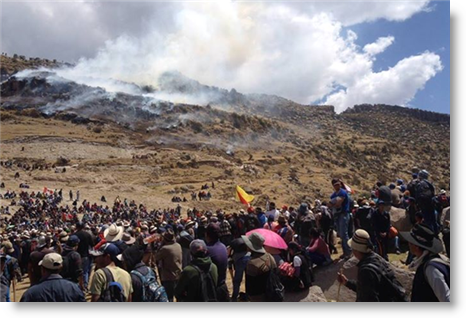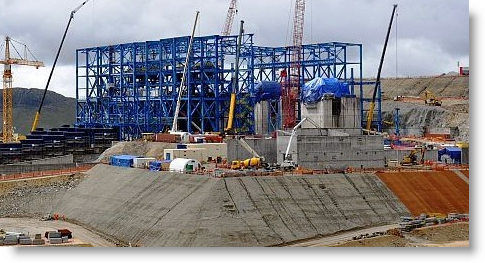
The government has declared a state of emergency for 30 days in several provinces of Apurimac and Cusco, after protests against the Las Bambas copper project left four men dead and 15 injured, including police.
A provincial strike was called on Friday, Sept. 25, against changes that have been made in the mining project’s environmental impact study, EIA, without explaining and consulting the changes with the local communities.
The strike turned violent on Monday when a small group broke into the main mining camp and began to destroy installations. Police used tear gas to disperse the crowds and protestors started to hurl stones with their slings.
“The company has changed the location of the processing plants and the system to transport the mineral,” said Ronald Bello, president of the defense front for Tambobamba, in the province of Cotabambas.
The processing plants are for the copper and molybdenum from the open pit mines at the huge Las Bambas project.

Initially, the processing plants were to be built at a cost of around $1 billion some 206 kms away in Espinar, Cusco, where the Tintaya and Antapaccay copper mines are, and the mineral from Las Bambas was to be transported in an underground minerals pipeline. From the plant, the minerals would then be transported to the coast by another pipeline, or even by railway.
But that was when Las Bambas was owned by the Swiss-owned Xstrata, together with the Tintaya and Antapaccay projects in Cusco. Xstrata acquired the mining titles to Las Bambas in 2010 and was to invest over $4 billion over 18 years in what then-President Alan Garcia described as “the contract of the century.”
However, when the Swiss commodities giant Glencore acquired Xstrata, also Swiss, in early 2013, Glencore acquiesced to China’s demands that it let go of the Las Bambas project — China was concerned about antitrust— and put the project up for sale.
In 2014, Las Bambas was acquired by MMG, which is majority owned by China MinMetals, and adjustments have been made to the project designs.
The changes include the processing plants now being built at Las Bambas, and that the mineral will be transported to the coast by truck, which will increase environmental risks to the broader area.
According to the community leaders in Apurimac, they have been demanding information from MMG and the government for the past six months but the Ministry of Energy and Mines minimized any changes as unimportant.
“We’ve been asking for dialogue for six months now, and they never took any notice, the government and the company were deaf to our requests,” said Bello, the defense front leader.
Amnesty International is asking the government for an immediate investigation into the deaths of the protestors.
“The deaths we have seen are unacceptable and those responsible must be made accountable. The price of social protests should not be the death of any person,” said Marina Navarro, the executive director for AI in Peru.
The state of emergency also includes the provinces of Chumbivilcas and Espinar in Cusco, where a state of emergency was called in early 2012 when two people were killed in protests against the Tintaya project that had been building up since before Xstrata acquired the project.
As with Tintaya, most of the communities within the influence of Las Bambas are not against mining itself but are afraid of pollution and the environmental impact of tailings and wastewater on their lands, and therefore on their animals and their own health.
Las Bambas, at 4,000 masl, is expected to begin production in 2016 and will be one of the largest copper mines in the world, producing some 2mn tonnes of copper concentrate in the first five years. The project is expected to operate for more than 20 years and holds considerable exploration potential, with only 10% of the total land holding explored so far.






Pingback: Las Bambas copper mine — 19 protestors acquitted of strike damage charges -